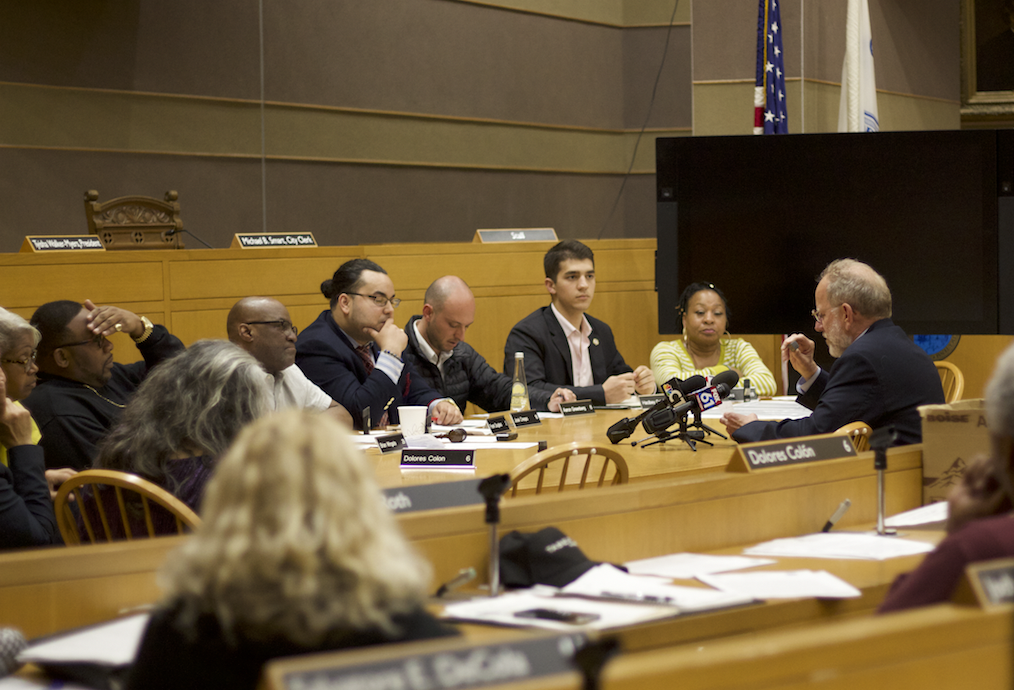
The Board of Alders moved on Wednesday night to discharge the motion to expand Tweed’s runway — effectively skipping legislative steps and sending the motion directly to the entire board, which will consider the proposal at its May 7.
At the center of the debate is Tweed-New Haven Airport’s main runway, which a state statute passed in 2009 limits to 5,600 feet. The airport hopes to overturn this legislation and extend its runway by 1,000 feet to accommodate longer flights. Airport and state administrators formed a panel to present the airport’s appeal to the alders. Because the Connecticut General Assembly’s legislative session ends in early May, the board had to bypass regular procedures in order to leave time to present a statement of support for Tweed at the state legislature.
“We want to make sure that we keep jobs that are currently here,” said Rex Development Marketing Director Barbara Malmberg, who was part of the panel. “A well-serviced airport is part of the puzzle.”
It is well known that the airport has been suffering from declining activity. In 2009 there were 21 legacy carriers operating at Tweed; today American Eagle is the lone operator. Airport officials view the runway expansion as a great economic opportunity.
Tweed-New Haven Airport Executive Director Tim Larson said multiple airlines have expressed interest in conducting business at Tweed if the airport lengthens its runway. Airport officials say an extended runway would allow the airport to accommodate flights to and from Washington D.C., Chicago and Florida. Larson also emphasized that the market is robust, with 40,000 college students in the area providing high demand for flights. As of now the only commercial flights provided by the airport are three daily round trips to Philadelphia.
According to Michael Piscitelli, New Haven’s deputy economic development administrator, this will translate into an additional $32 million in economic output, along with 310 direct and indirect jobs, even under a low-gross scenario.
But the project has been met with significant opposition from residents. The airport lies along the border of New Haven and East Haven, and is adjacent to residential areas which will be affected by increased traffic and noise from increased airport activity. Piscitelli categorized concerns into three main categories: traffic and parking, environmental sustainability and economic value.
“We’re sensitive to these concerns, and we strive to put together a community benefits package that addresses these concerns,” Piscitelli said.
The city plans on mitigating potential harm by constructing a roundabout for intersections with projected traffic increase, and by creating parking spaces for residential use. City Engineer Giovanni Zinn said that these transportation-related compensations will cost $300,000 to $400,000. He further dispelled concerns about drainage in inclement weather, explaining that the airport works “like a bathtub” that would contain water and prevent a storm surge into the neighborhood.
Noise cancellation is another point of debate. Airports are mandated by the Federal Aviation Administration to keep noise pollution under control. In 2015, Tweed carried out a sound study and identified 184 homes that would experience noise of 65 decibels or above. According to Larson, 30 to 40 of these homes have already been renovated in areas such as heating, air conditioning, window insulation and ceiling installations, worth $40,000 per house.
After the panel finished its explanation, the meeting opened up to public testimonies. Local 35 President Bob Proto spoke in support of expanding the runway because it would better service the four million residents who live closer to Tweed than any other airport. He explained that from an economic standpoint, this would contribute to in-state tax revenue and decluttering highways.
Gary Doyens, a New Haven resident, was less optimistic about the expansion.
“The legislation was a codified agreement to limit the runway, and Tweed is trying to rush overturning the legislation by voting at the very end of the legislative season, shoving it in front of the aldermen,” Doyens said.
He also expressed exasperation with the airport as it continued to push back its timeline for a community benefit package. He said he doubted the airport would be able to attract more airlines in the short term.
Tweed is one of two airports in Connecticut with regular commercial service along with Bradley International Airport.
Nicole Ahn | sebin.ahn@yale.edu







